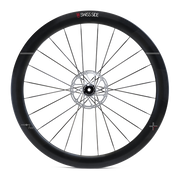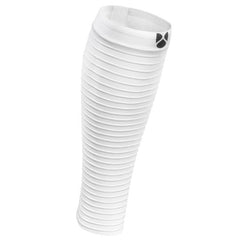Aero vs Weight Mt Ventoux Simulation Summary
Introduction:
The purpose of this study is to determine whether a light weight climbing bike, or a heavier aero bike setup would be fastest for Stage 11 of the 2021 Tour de France, which is a mountain stage, going twice over the Mont Ventoux. To answer this question, five scenarios were simulated:
- Solo rider over entire course. (Lightweight vs Aero bike)
- Effect of two riders working together over entire course.
- Solo rider on climb only. (Lightweight vs Aero bike). -For this, the final climb highlighted in red on the course map below is used.
- Team (two riders) on climb only. (Lightweight vs Aero bike). -*See note below.
- Solo rider on final descent highlighted in blue on the course map below. (Lightweight vs Aero bike).
*With scenario 4, only the final climb (in red) is simulated, as the realistic assumption is that the GC riders arrive at the base of the climb together with their domestiques, and that the race plays out on that climb.

Simulations were done using Swiss Side’s performance simulation tool, which simulates the time required to cover a course, taking into account all relevant parameters including:
- Physical: Weight, course profile, aerodynamics, rolling resistance, drive train losses
- Environmental: Temperature, pressure, density, wind
-
Physiological: Rider Critical Power (CP), Wprime (W’)
Simulations are done both on a single rider as well as for multiple riders in a team situation, where the riders share the work in an optimized way to get the GC rider to the top in the minimum time. For team simulations, the drafting effect is also considered, which is non-negligible even at lower speeds.
Simulation Setup Overview:
- Course: 2021 TdF Stage 11. For simplicity, the weather is considered to be a dry, wind-still day.
- The physiological characteristics of a typical GC contender were used with a weight of 63kg and a Critical Power of 360W.
- The light weight bike was considered to be at the 6.8kg minimum UCI legal weight.
- The aero bike was considered to be +1kg heavier at 7.8kg
- The aero drag was based on typical numbers for such a rider, with a base CdA of 0.260 on the aero bike and 0.280 on the climbing bike. The aero drag is adjusted for different rider positions at different speeds. Eg. Descending in an aero tuck, or standing up on a steep climb.
- For the ‘Team’ simulation setup, for simplicity, only two riders were considered. The GC rider is allocated one domestique to support on the climb. The domestique’s power strategy is set such that all available energy is used up (W’=0), 3km before the summit, leaving the GC rider solo for the final part of the ascent. Aero drag reduction for the following (drafting) rider is included.
- Furthermore, for the final descent, the time loss / gain of the aero bike vs. the climbing bike is simulated to determine if the aero bike recovers time on the descent due to the higher speeds.
- The rolling resistance coefficient (Crr) is fixed at 0.0033 for both bikes, although the light weight climbing bike would normally have tubular tyres with higher rolling resistance. To quantify this effect, a rolling resistance sensitivity study is also done.
Results:
- Solo rider over entire course:
- For a solo rider on the light weight climbing bike, the time taken to cover the entire course is simulated to be 5h 23m 24s with an average speed of 36.5km/h
- The aero bike setup is simulated to be faster over the entire course by -3m 16s (-1.0% total time) with an average speed of 36.9km/h
- Effect of two riders working together over entire course:
- Both riders are considered to be on the faster aero bike setups.
- The work is shared between the riders in a power-optimized way such as to minimize the time required to cover the stage by the two riders.
The time saved by the two riders working together compared to a solo rider, on the aero bikes is simulated to be an additional -4m 46s (-1.5% time) with an average speed of 37.5km/h
- Solo rider on climb only:
- For a solo rider on the light weight climbing bike, the time taken to cover the final climb is simulated to be 58m 53s with an average speed of 21.5km/h
- The aero bike setup is simulated to be slower over the final climb by +19s with an average speed of 21.4km/h
- Team (two riders) on climb only:
- For two riders working together in a power optimized way on light weight climbing bikes, the time taken to cover the final climb is simulated to be 57m 51s with an average speed of 21.9km/h. This is 1m 2s faster than the solo rider on the light weight climbing bike.
- The same two riders on aero bike setups is simulated to be slower over this final climb by +22s with an average speed of 21.8km/h.
- Solo rider on final descent:
- On the final descent, a solo rider on the aero bike setup would be -24s faster again compared to the light weight climbing bike setup. So the advantage of the light weight climbing bike is more than neutralised on the descent.
Rolling Resistance Sensitivity:
For the purpose of this study, the rolling resistance (Crr) was kept constant at 0.0033 for both setups. However in reality, the light weight climbing bike would likely use tubular wheels and tyres in order to achieve the 6.8kg minimum UCI weight. The aero bike setup could use a clincher tyre. Tubular tyres have a clear increase in rolling resistance. This can be as high as +30%. In order to quantify this effect, a sensitivity study on the rolling resistance was done. Increasing the Crr to 0.0043 (+30%) results in the following time increases:
- Entire course: +2m 45s
- Final climb: +33s
With these results in mind, if the light weight climbing bike were to use tubular tyres and the aero bike to use clincher tyres, any advantage from the lighter weight of the climbing bike would most likely be entirely lost due to the increase in rolling resistance, even on the pure climb.
Summary:
Overall, the aero bike is the fastest setup for this course. For other courses, which have a mountain summit finish, a lighter weight climbing bike could bring a strategic advantage for the final climb. However on this Stage 11 course, where the final climb up Mont Ventoux is coupled with a descent of equal magnitude, the advantage on the climb from the lighter weight of the climbing bike is neutralised. The climbing bike only brings an advantage over the aero bike on the pure climbs. This however makes the assumption that both bikes use wheel-tyre combinations that have the same rolling resistance. The rolling resistance sensitivity study indicates that this effect is not negligible. In particular if the lighter weight climbing bike were to use tubular tyres and the aero bike clincher tyres, then it is likely that any advantage of the climbing bike due to the lighter weight would be negated due to the increased rolling resistance of the tubular tyres.



Kommentar hinterlassen